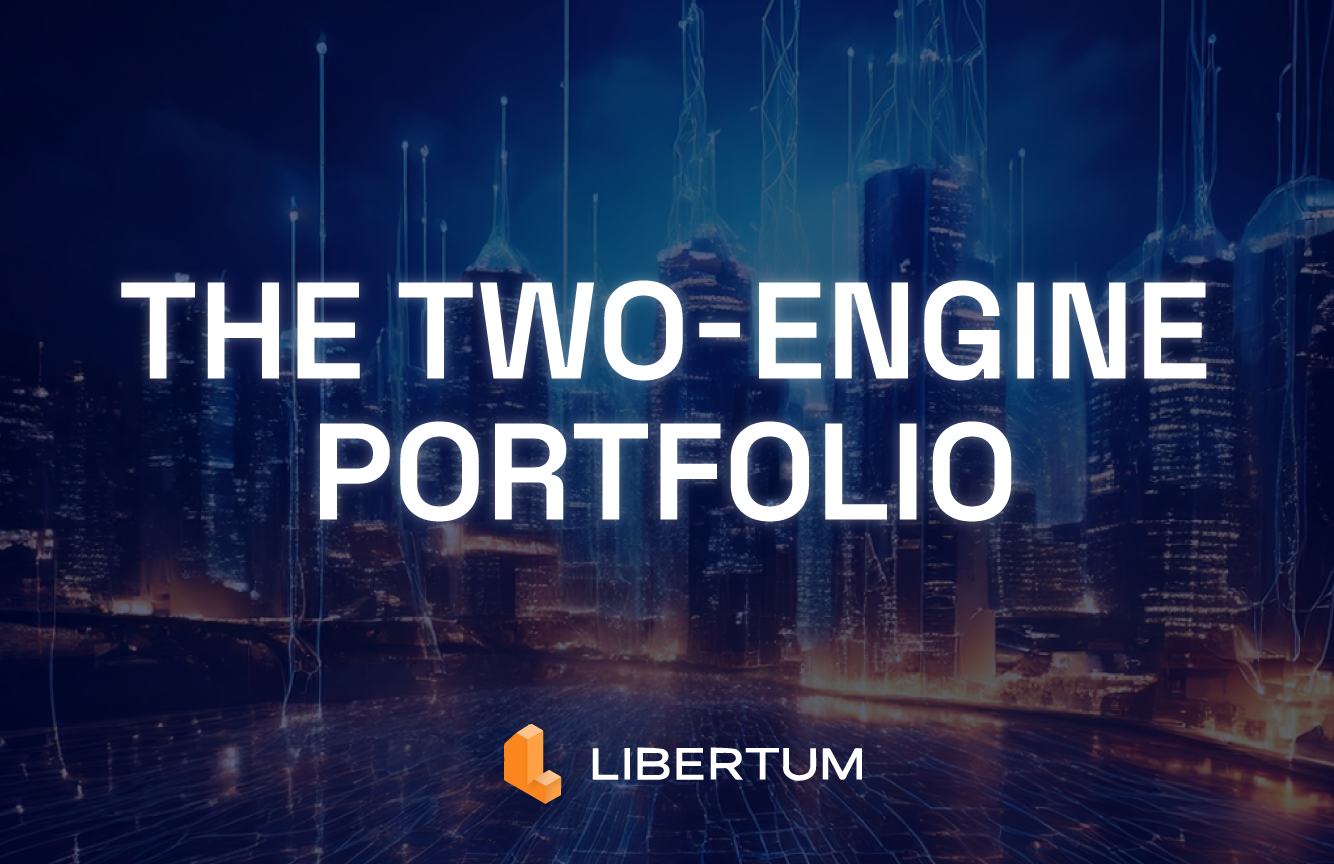For as long as markets have existed, investors have wrestled with a simple problem: how to protect wealth while still compounding it. In traditional finance, the answer was the 60/40 portfolio; bonds for predictable yield, equities for growth.
Today, in the era of tokenization, that allocation logic is shifting. Instead of bonds and equities, a new dual engine is taking shape: real-world asset yields as the stabilizer, and native token economics as the accelerator.
Within Libertum, this structure is embodied in B-DEX property pools and the $LBM token. Together, they form a portfolio design that balances income you can count on with upside that scales with ecosystem activity.
Engine One: Stability Through Tokenized Real Estate
Real estate has always been the ballast of wealth creation. What Libertum adds is a digital layer that strips away friction and opens access. Through B-DEX, income-generating property is tokenized, traded, and settled with a speed and transparency traditional structures cannot match.
The effect is simple: the solidity of property income, but with fractional ownership, secondary liquidity, and on-chain verification.
For investors, this engine is the anchor:
- Yields tied to real, tangible assets
- Lower volatility than speculative tokens
- Access that is global, fractional, and liquid
In a market where sentiment often whiplashes token prices, the steady logic of property-backed yield provides something crypto alone rarely offers: predictability.
Engine Two: Upside Through $LBM
Alongside the stabilizer runs the second engine - the $LBM token.
Unlike static yield, $LBM is wired into the very metabolism of Libertum’s ecosystem. Every transaction on B-DEX reinforces token demand:
- Fees are settled in $LBM
- Liquidity pools pair with $LBM
- Staking access requires $LBM
- A share of revenue funds continuous buyback-and-burn cycles
This creates reflexivity. The more property volume passes through B-DEX, the greater the programmed scarcity of $LBM.
Property yields may be bounded by rents and market rates but $LBM’s potential appreciation scales with activity across the ecosystem. It is the same logic that once drove exchange tokens like BNB, except here the foundation isn’t speculative trading; it’s real-world asset flows.
Market Illustration: Property Flows to Token Scarcity
To see the mechanics, take a simple cascade:
| Monthly RWA Volume | Platform Revenue (1% fee) | Buyback & Burn (5%) | Staking Fees (2,000 pools @ €5) | Effect on $LBM |
|---|---|---|---|---|
| €2 million | €20,000 | €1,000 | €10,000 | Modest demand + steady burn |
| €10 million | €100,000 | €5,000 | €10,000 | Recurring buy pressure |
| €25 million | €250,000 | €12,500 | €10,000 | Strong burn + amplified scarcity |
And this is before factoring in swap fees, liquidity locks, and governance staking, all of which deepen demand.
The structure is deterministic: more property flows → more revenue → more buybacks → fewer tokens in circulation.
Why the Dual Engine Matters
A portfolio driven by a single engine can stall.
- Real assets alone preserve value but rarely compound fast.
- Tokens alone can spike but often collapse without a stable base.
Together, however, they reinforce each other:
- Property flows deliver steady yield → investors stay engaged.
- Flows also drive $LBM demand and burns → token scarcity increases.
- LBM’s appreciation draws new participation → volumes expand further.
The result is a flywheel that works across cycles: steady accumulation during quiet periods, accelerated compounding during expansion.
Macro Backdrop: A System Built for Its Moment
This design does not emerge in a vacuum. Tokenization has already crossed $16 billion on-chain, with forecasts pointing to hundreds of billions by 2030. BlackRock is running multi-billion-dollar tokenized funds. Nasdaq is preparing digital securities rails.
These are not speculative experiments; they are the financial system upgrading itself. In such an environment, the ability to capture stable RWA yield plus token upside is not simply interesting. It’s a structural advantage.
Conclusion
The 60/40 portfolio is giving way to a digital allocation model:
- Tokenized real estate as the stabilizer
- Native deflationary tokens as the accelerator
Within Libertum, these two engines are fused: B-DEX property pools create the stability, while $LBM tokenomics amplify growth. To invest in one is to reinforce the other.
This is not passive holding. It’s a system where investors help fuel the very ecosystem that compounds their returns.
The Two-Engine Portfolio is more than a strategy; it is the blueprint for wealth in a tokenized economy.
